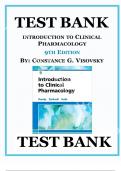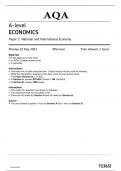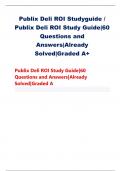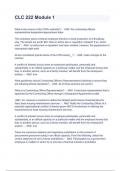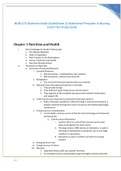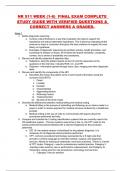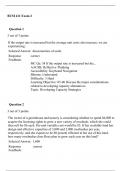Exam (elaborations)
Test Bank for Introduction to Clinical Pharmacology 9th Edition (Visovsky, 2019), Chapter 1-19 Complete Guide.
Test Bank for Introduction to Clinical Pharmacology, 9th Edition (Visovsky, 2019), Chapter 1-19 Complete Guide. Chapter 01: Pharmacology and the Nursing Process in LPN Practice Chapter 02: Legal, Regulatory, and Ethical Aspects of Drug Administration Chapter 03: Principles of Pharmacology Chapter 0...
[Show more]
